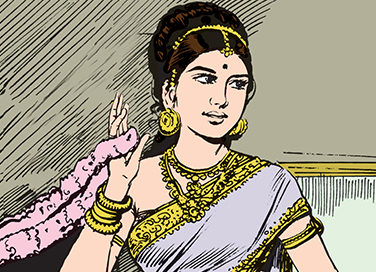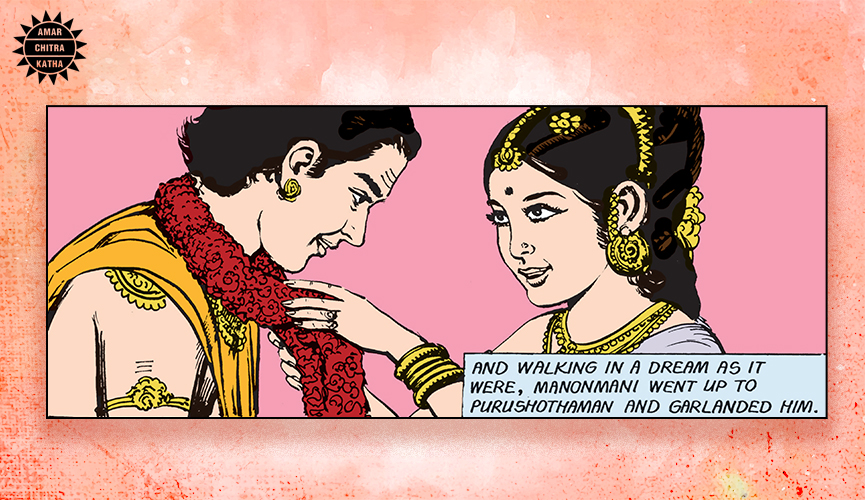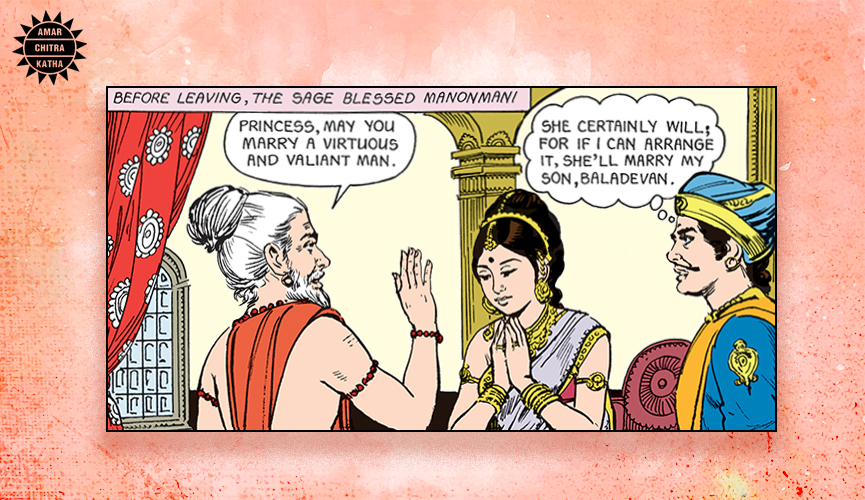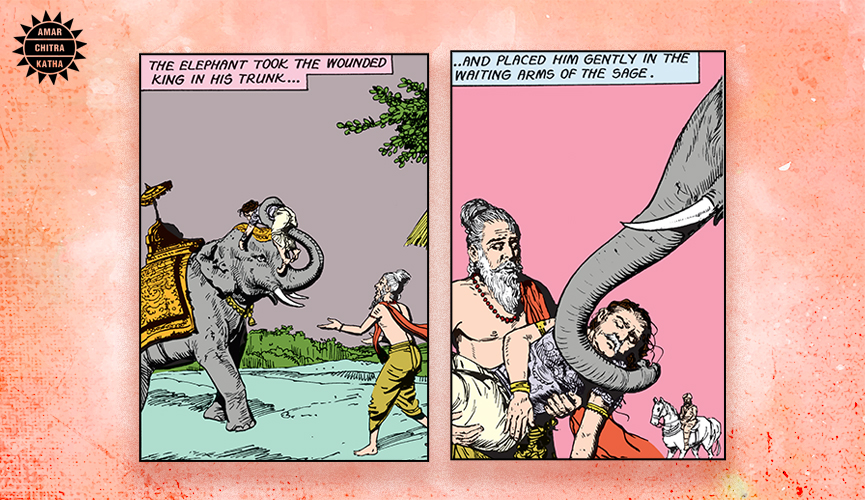Manonmaniam
- March 6, 2023


Manonmaniam
- March 6, 2023
By Srinidhi Murthy
Manonmaniam, an immortal epic play in verse, was written by P. Sundaram Pillai (1855-1897), in 1892. Sundaram Pillai was a noted Tamil scholar, professor of philosophy and served as a high-ranking official in the old Travancore maharaja-ruled state. Considered as the pioneering play in Tamil literature, Manonmaniam is about a princess who finds love in the middle of a web of political intrigue and betrayals.
Manonmani was the only daughter of Jeevakan, the Pandya king. Jeevakan relied on the guidance of his teacher, Sage Sundara, to rule his kingdom. Sundara’s influence over Jeevakan caused jealousy in the king’s chief minister, Kudilan. As Jeevakan had no son to succeed him, Kudilan also wanted his son, Baladevan to marry the princess. One day, Sage Sundara decided to go on a pilgrimage. This was the moment Kudilan had been waiting for. In the sage’s absence, Kudilan began to gain influence over the king. Whether he succeeds in his plans or not, forms the rest of the story.
To receive more such stories in your Inbox & WhatsApp, Please share your Email and Mobile number.

The courtier’s deception
In a monarchy, only the king made the final decision regarding his kingdom and people. Hence, a courtier always wanted to gain some influence over the king, so that he could indirectly influence his important decisions. In this story, we come across Kudilan, as a cunning courtier, who wants to reach the king’s ears for the same reason, but his attempts are thwarted by the king’s teacher and advisor, Sage Sundara. Hence Kudilan makes his best attempts in the story to turn the king against Sage Sundara. To strengthen his position in the court, Kudilan also plans to marry his son to the king’s only daughter, Manonmani. Kudilan also tries to betray his king to the enemy to save himself. The character Kudilan was created to show how dangerous was to have a cunning advisor in the court.

The position of a princess
The second theme the story deals with is the position of a princess in the court. Manonmani, as the only child of the king, with no brother to succeed after her father, becomes a valuable pawn in a court full of wilful courtiers. She also has to make some unhappy decisions for the well-being of her father and kingdom. For instance, Manonmani was not eager to leave her birthplace Madurai to move to a new city, Tirunelveli. She even tries to counsel her father against it. When Jeevakan refuses to listen, she agrees for the sake of her father. Later, after Jeevakan loses his kingdom, he wishes that Manonmani should marry Baladevan. Though the princess never wanted to marry Baladevan, she finds herself unable to refuse her father’s request. With Manonmani, the writer tries to show how a princess was expected to put the happiness of her father and her kingdom before her own.
Loyal friendships
Manonmaniam highlights the importance of having loyal friends, especially for a king. The readers can witness the concern Sage Sundara has for Jeevakan and how often he guides him to the right path. We also see the loyalty shown by an elephant as it carries the wounded Jeevakan from the battlefield and takes him to the sage’s hermitage. The courage shown by Jeevakan on the battlefield earns admiration from the rival Chera king, Purushothaman. It is Purushothaman who reveals the deception of Kudilan to Jeevakan and offers his friendship to the Pandya king. With these characters, Sundaram Pillai shows how a king should always surround himself with loyal friends and advisors.

The play was adapted into a Tamil movie titled ‘Manonmani’ in 1942. The movie received positive reviews and ran for more than 25 weeks. It was also adapted as a comic by Amar Chitra Katha, titled ‘Manonmani’.
Read the entire story of the epic in Amar Chitra Katha’s title, Manonmani, available on the ACK Comics app!
To receive more such stories in your Inbox & WhatsApp, Please share your Email and Mobile number.

Comic of The Month
The Naval Journey of India Book I
This book is the first of a three-book series that takes a deep and detailed look at India's Naval History and a deep insight into the lives of our men and women in white. But any series on the Indian Navy has to start at the very beginning - exploring India's celebrated maritime history. Join our little hero, Bharat, and his grandfather, Commodore Sagar, as they sail into the deep blue waters of time. Book I of The Naval Journey of India takes a sweeping look at India's maritime endeavours, how the seas impacted us over millennia and how the oceans made us who we are.